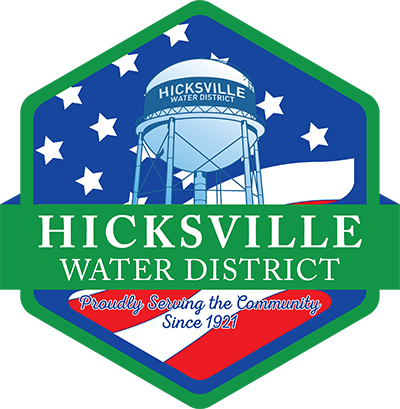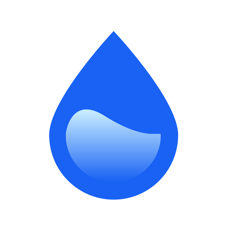Water and Environment
The Water Cycle
Water rises from the ground and is absorbed by a cloud, ultimately falling back to the Earth in the form of precipitation, such as rain or snow. Next, the precipitation is eventually evaporated to the cloud again, repeating the cycle constantly while changing from a solid to a liquid to a gas.
Sometimes precipitation creates a runoff that travels over the earth’s surface to fill lakes and rivers. During this process, the water infiltrates the land and percolates through openings in the soil to replenish underground aquifers. The water travels downward through the earth at a rate of about one foot per day, a process that naturally cleanses the natural resource of most impurities.
Interestingly, geographic locations that are close to oceans or large bodies of water typically experience more precipitation, causing water to more often evaporate and form clouds.
Conversely, areas that are farther from water or near mountains will receive less precipitation. As clouds move up and over the mountains, the water vapor condenses to form freezing precipitation, causing snow to fall on the peaks.
Aquifers
Long Island has an incredible natural drinking resource below the ground called aquifers. Deep, underground layers of highly porous sand, gravel, sediment or rock, aquifers contain between 65 and 120 trillion gallons of water—enough to cover the island’s 1,200 square miles in a 300-foot flood!
Water is stored in three layers—the closest to the surface is the Upper Glacial Layer, which contains water that fell between 10 and 50 years ago. No drinking water is taken from this section.
The middle layer and largest of all the formations is the Magothy Aquifer, from which the majority of Nassau-Suffolk’s public drinking water is drawn. The water here can be as much as 1,000 years old. Running from 200 to 1,000 feet deep, this layer of sand, gravel and silt was deposited about 60 million years ago and is Long Island’s main source of drinking water for its 2.7 million residents.
A Raritan clay layer is found between the Lloyd and Magothy aquifers. Most scientists believe that there are gaps in this section that allow some exchange of water between the two aquifers.
The Lloyd Aquifer is the deepest and least used layer, starting at 600 feet below the Earth’s surface. This 200-foot layer is more than 1,800 feet deep in some areas and holds the oldest water—some of it more than 5,000 years!
Protecting Our Only Water Source
While we have an abundant supply of water, we cannot and should not take it for granted. We must always look to protect its quality, safety and integrity for future generations. The activities we participate in on the surface directly impact the quality of our water. Always remember that our water comes from directly beneath our feet so whatever we dump, pour or put into our soil can eventually make its way into our water supply. Once the aquifer becomes contaminated, the cost of water increases dramatically as new treatment systems must be constructed, operated and maintained to restore our community’s water quality.
Hicksville Water District Tips
- Install a water-efficient showerhead. How will you know if your current one is not water-efficient? Place a one-gallon bucket in the shower and turn on the tap. If the container fills in less than 20 seconds, your showerhead should be replaced. By doing this, you can save your family more than 500 gallons per week!
- Speaking of freshening up, consider cutting down your shower time to five minutes and save up to 1,000 gallons per month. Or better yet, take a bath—you’ll use less water.
- Run your washing machine and dishwasher only when they are full and save 1,000 gallons a month—that’s 12,000 gallons per year!
- Thirsty? Instead of running tap water until it is cool, place a container of tap water in the refrigerator. This way, a tall, cool drink of tasty tap water is always on hand.
- To reduce the amount of water it takes to flush your toilet, place a plastic bottle filled with water in your tank. This act of displacement can save seven to 10 gallons a day. Be sure that the container does not interfere with any operating parts and never use a brick.
- Remember, the toilet does not equal a waste bin. Use the garbage to dispose of tissue, cigarettes or trash. Each time you flush, you can use up to seven gallons of water.
In the kitchen, avoid thawing frozen foods by running them under water. If you can’t plan ahead to defrost them, then place the items in a bowl of cool water. - Turn off the tap while brushing your teeth, washing your hands, shampooing, conditioning and shaving and a family of four can save up to 400 gallons of water a week.
- When cooking, select the proper-sized pans for your food since larger ones require more water for cooking and are less efficient when it comes to use of gas and electricity. Using as little water as possible will also help retain more nutrients.
- Finally, share these valuable tips with your children and grandchildren. If we teach conservation to our legacies, we will ensure a plentiful supply of water for generations to come.
Seasonal Tips
- When planting for the season, choose groundcovers that require less watering such as aloe, daylilies, forget-me-nots, marigolds, lavender and zinnias.
- Install a spring-loaded shutoff nozzle on each garden hose to avoid water waste.
- When sprinkling your grass and flower or vegetable beds, avoid watering the driveways and sidewalks.
- Start a compost pile and add it to your garden, along with wood chips or peat moss to boost water retention.
- Consider investing in a slow-drip irrigation system to avoid over-watering and save money on your water bill.
When it’s Summer, it’s HOT and water usage tends to be exceedingly high. But, there are some things that you can do to reduce your numbers:
- Keep your swimming pool level low to minimize splashing.
- Cover your pool when it is not in use to limit evaporation.
- When you’re finished using your pool towels, drape them over a chair in the sun to dry. Then, reuse them the next time you take a dip.
- Recycle wading pool water—give your thirsty shrubs a drink!
- Always remember to check underground sprinklers, pools and spas for leaks. If you do have one, get it repaired immediately to avoid costly water waste.
- Don’t sprinkle during the heat of the day. See Nassau County Lawn Watering Regulations for more detailed instructions.
When it’s Fall on Long Island, there’s a crispness in the air. Following are some water-saving ideas for the season:
- Keep up on that compost pile by adding all the leaves you’ve raked from your lawn.
- Drain outside water spigots and turn off water flow from inside of the house.
- As you probably won’t need them until Spring, drain all garden hoses, disconnect them and store them away.
- Clear your rain gutters of all debris.
- Check the toilet for leaks and the sinks and tubs for drips. (see Do It Yourself section)
- Make note of misdirected underground sprinkler heads for correcting in the Spring.
- Call the company who installed your in-ground sprinkler system it and make an appointment for them to blow out the water in the pipes with compressed air (no chemicals allowed) so that they don’t freeze and break.
When it’s Winter it can get downright chilly! Here are a few ideas that may come in handy as the digits dip:
- Insulate all water pipes that are located in unheated areas such as garages and pantries—especially your hot water pipes.
- Want to get away from the chilly weather? If you go on vacation, do not completely shut off your heat, as you’ll want to avoid bursting pipes. Have someone periodically check on the house.
- If you do end up with frozen water pipes, there are a few ways to defrost them, including utilizing a portable hair dryer and very slowly applying heat to the pipe.
- Check your water meter. If the bottom is cracked, then the gauge is frozen. Call your water supplier for further assistance.
Lawn and Sprinkling Advice
- Leaving footprints on your lawn? Then it’s time to water!
- Since water evaporates more rapidly during the hours of 10 a.m. and 4 p.m., restrict watering to before or after these times. See Nassau County Lawn Watering Regulations for more detailed instructions.
- You don’t need to over-water to enjoy a lush green lawn. On Long Island, we only need about one to two inches of water per week (including rain) to encourage healthy growth.
- To determine an accurate length of time to turn on the hose, measure and mark one inch on an empty coffee or tuna can and place on the lawn while you irrigate. Note the time and keep checking until it is full. This way, you can avoid throwing money and one of life’s most precious resources down the drain.
- When you do irrigate, water deeply to encourage roots to grown downward to reach the water. Sprinkling lightly promotes shallow roots that will grow close to the surface, often resulting in weakened plants or grass blades that are more vulnerable to drying from the sun and disease.
- Keeping the length of your lawn around 2 or 2 ? inches will help reduce evaporation. When you’re finished mowing, leave the clippings on the lawn to boost water retention and help the grass grow thicker.



